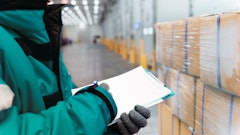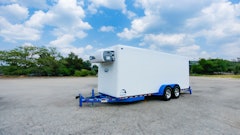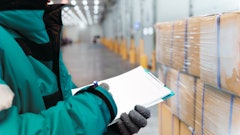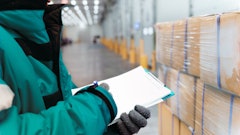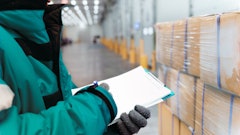VITAL STATS
In the middle of the geographic center of the country.
Population: 501,000
Land Area: 97,000 square miles
Tax Relief: Wyoming has no personal state income taxes, no corporate state income taxes, no inventory taxes and low property taxes.
Into The Wild: The state boasts seven national forests and two national recreation areas.
Tell anyone you run a food manufacturing, processing or distribution operation in Wyoming and they might raise an eyebrow and then try to dismiss you. After all, it’s not exactly the region that pops into mind as a hot business and logistics hub, is it?
Just ask Tucker Fagan, who knows this scenario all too well. "We meet people at trade shows all the time who tell us they come here for our great fishing or for family vacations," says Fagan, CEO of the Wyoming Business Council in Cheyenne. "But they never think about Wyoming as a place to do business. We are working hard to change that."
Head just 40 miles south of Cheyenne to Fort Collins and Greeley, CO, and it’s more or less the same story. "These are two very vibrant towns so close to us," continues Fagan. "We talk to businesses there and tell them we have a very low--tax environment with no corporate income tax, no income tax and only a 4 percent sales tax. We also have a sales use tax abatement of 4 percent on manufacturing equipment."
These facts are a revelation to them and others across the country, who are beginning to listen a lot more closely to Wyoming’s story.
Wyoming is well known for its clean air and water and has a population of only 500,000 in a 97,000--square--mile area. Cheyenne is an interstate highway and rail hub, with I--80 being the major east--west continental highway. "During the winter, I--80 is the preferred east--west route for truckers because I--90 is too far north with too much snow and ice," Fagan says. "And traveling I--70 means you have to go through more high--mountain passes in Colorado than you do in Wyoming. Essentially, I--80 generally follows the Oregon Trail the pioneers followed to get around the big mountain passes."
For north--south highway movement there is I--25, starting in Cheyenne and traveling north to Montana. The Union Pacific and Burlington Northern Santa Fe railways intersect in Cheyenne, offering excellent nationwide north--south and east--west service.
Wyoming’s three core industries throughout its history have been the mineral industry (coal, oil and gas); tourism (Yellowstone National Park, Grand Teton Park, Devil’s Tower and the Red Desert); and agriculture (cattle and row crops such as sugar beet, alfalfa and barley). In fact, Wyoming is the eighth--largest sugar beet producer in the country, so there are excellent opportunities to expand beyond refined sugar production into areas such as candy manufacturing, says Cindy Garetson Wibo, director of agri--business marketing.
As for food research and development, the University of Wyoming is a land--grant institution with county extension agents present in every county of the state. Several university research stations set up around the state offer excellent resource opportunities for food companies to tap into.
"Because we are a mineral state, the mineral industry sustained us very well throughout our history," Fagan says. "In fact, in 2003 Wyoming had $1 billion over the state’s operating expenses budget and in 2004 we had a surplus of about $900 million, which brings us close to over $2 billion."
This surplus generates more than $300 million annually in interest, which flows directly into the state’s general fund.
"We are investing these monies in business parks and community infrastructure networks," says Fagan.
Wyoming boasts a vital fiber optics network crisscrossing the state, and every high school even has a T--1 line. "We believe part of the success of our future means having an excellent communications network to facilitate and grow our businesses."
The state’s Business Ready Communities program, with $33.4 million worth of appropriations, is designed to help fund incoming businesses wanting to develop vital infrastructures in locations they choose to establish facilities.
"This program’s concept is ‘build it and they will come.’ We have many communities that don’t have a business park or the infrastructure, so we offer these grants twice a year to do all of that," Fagan says. "If we have a company committed to building in the state, we want to be able to move fast to accommodate them."
As for workforce investment opportunities, the state operates the Department of Workforce Services, offering incentives so companies can develop a qualified and trained workforce through advanced training programs. "We rely on businesses to tell us their needs and we pay them to have their employees trained," Fagan says, adding the incentive could be up to $2,000 per employee, based on the amount of the employee’s salary.
The state recently hired New Jersey--based Wadley Donovan––a recognized site selection consulting firm--to conduct the state’s second targeted industry study.
Says Fagan: "We are looking to them for guidance in understanding which section of our state would best serve which types of companies. This is the basis for our game plan."
----------------------------------
High Plains Freezer Services
The One And Only
Logistically speaking, most people would not consider Wyoming an ideal location in which to operate their business. But High Plains Freezer Services Inc.––the only freezer and cold storage facility in Wyoming––offers some strategic advantages.
The USDA--and FDA--approved freezer warehouse offers 4 million cubic feet (200,000 square feet) of capacity on 11 acres––with an additional 35 acres across the street ready for development.
Among other products, the facility stores peppers for Nestle which it uses in its Stouffer’s products.
"During certain times of the year Nestle might store up to 5,000 pallets of finished product in our facility," says Brian Fox, vice president and general manager.
The facility can hold up to 15,000 pallets, which equates to about 680 truckloads of product. "At peak season, we are in the neighborhood of 1,000 or 1,200 full truckloads on the inbound and outbound," he adds.
The warehouse was established in Laramie back in the late 1960s because of its strategic location relative to rail service, with the main line of the Union Pacific coming right through Laramie.
"The railroads back then had a storage--in--transit program, so a big retailer or wholesaler could buy a railcar load of product off the West Coast and store it in Laramie," says Fox. The facility has 14 rail doors so 14 rail cars can be loaded or unloaded at a time and there is capacity to put at least 40--45 rail cars on the facility’s sidings.
As the logistics industry evolved, most of the retailers and wholesalers did away with rail in the early 1980s and the rail sidings into the facility were removed.
But times have changed. "We are in the process of finalizing some deals with food processors who will be putting facilities on our property here," says Fox.
"There’s lots of room for other food companies here. Food companies can get a very low price on property and they don’t have to build a freezer or an engine room because we already have that entire infrastructure built here. All they have to do is build their processing or manufacturing facility."
The site is only two days away from major metropolitan areas, with excellent proximity to the West Coast.
High Plains Freezer is close to all the California markets––but without the California price tag.



